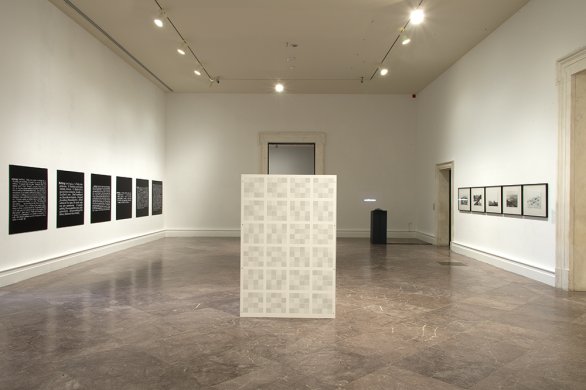Jan Vercruysse
Belgian, 1948-2018

C (Atopie), 1987
Artwork Details
Materials
mirror, glass, and wood
Measurements
overall: 82 11/16 x 25 5/8 x 4 11/16 inches (210.06 x 65.02 x 11.94 cm); glass panel: 82 11/16 x 35 3/16 x 4 11/16 inches (210.06 x 89.41 x 11.9
Collection Buffalo AKG Art Museum
Credit
The Panza Collection and by exchange: George B. and Jenny R. Mathews Fund, Bequest of Arthur B. Michael, Albert H. Tracy Fund and Bequest of John Mortimer Schiff, 2015
Accession ID
2015:14.34a-f
Jan Vercruysse is known for his evocative sculptural installations that are reminiscent of domestic architecture as well as the infrastructure of art institutions. He began his career as a poet, but in 1974 he moved toward the visual arts, first choosing photography as his medium. In the mid-1980s, Vercruysse began creating sculptures in which he referenced the machine-made material vocabulary of Minimalist art of the 1960s. C (Atopie) comes from Vercruysse’s breakout series Atopie, or “non-place,” which features constructions made from wood and glass often positioned in relation to the wall. The sculpture here includes a large bisected rectangular form. Tooled like molding, it resembles textual brackets, a picture frame, or a window that has been split apart. Between the two halves, Vercruysse placed two panes of glass and a beveled mirror that would normally be found in a domestic setting. While they might resemble functional objects, these utilitarian domestic forms are isolated from their traditional function when found in the context of the museum and the gallery, revealing how the art context can itself be an atopie.
Label from Looking at Tomorrow: Light and Language from The Panza Collection, 1967–1990, October 24, 2015–February 7, 2016
